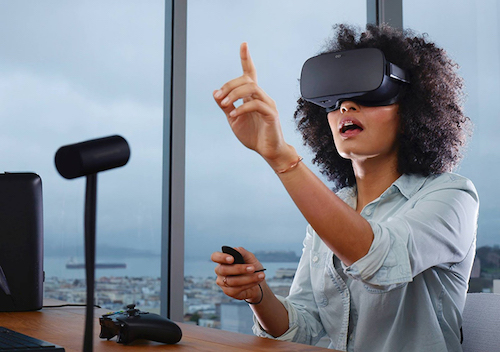Heavyweights Form Virtual Reality Association to Promote Best Practices

Facebook’s Oculus is one of the founding members of the new Global Virtual Reality Association. Image Courtesy of Oculus
Latest News
December 29, 2016
On the heels of increasing interest and hype surrounding virtual reality, a who’s who list of players have come together to create an association tasked with helping promote the technology.
Led by such household name consumer star power as Google, Facebook’s Oculus, Samsung and Sony Interactive Entertainment, among others, the new non-profit Global Virtual Reality Association (GVRA) is tasked with promoting the responsible development and adoption of VR globally, according to the association’s spokesperson.
 Facebook’s Oculus is one of the founding members of the new Global Virtual Reality Association. Image Courtesy of Oculus.
Facebook’s Oculus is one of the founding members of the new Global Virtual Reality Association. Image Courtesy of Oculus.Like with most trade associations, the GVRA’s mission is to develop and share best practices in VR use cases and applications, conduct on-going market research and coalesce an emerging global VR community, which will include representation from and serve constituents in the policy, industry and consumer sectors.
“This group believes in VR’s immense global potential and the opportunities ahead—it will change the landscape of education, training, healthcare and design, among many other areas,” reads the FAQ on the GVRA’s website.
There was definitely a noticeable uptick in consumer activity surrounding VR in 2016, and experts expect even more momentum moving forward. According to The State of Virtual Reality 2016 survey, conducted by Yeti, a product-focused design and development studio, VR is gaining traction across diverse industries beyond entertainment, including medical and health care, high tech and agriculture.
However, despite the momentum, the survey found the potential for the technology is still under-explored and VR best practices are still in their infancy. Sixty percent of product developers responding to the Yeti survey said they had a good understanding of VR development practices, but 40% were still struggling to get their arms around the technology and best practices. Lack of skilled development resources, difficulty in determining a strategic direction for VR projects, and technical limitations were other barriers to more widespread development of VR products and applications.
Learn more about design engineering approaches to virtual and augmented reality in “A New Virtual Reality,” which was published in DE’s December Outlook issue.
That’s where the GVRA comes into play. This mission is to establish a strong foundation for the global VR industry and drive quality in device production and operation. Promoting open interoperability standards may be another area where the association can have some impact, experts say.
“While seeking to educate consumers, governments, and industry about VR’s potential, the association wants to get ahead of challenges with developing and deploying the technology responsibly,” the GVRA FAQ said. “That’s why we feel it’s important to bring together international experts across industry to work collaboratively on global education, potential technical challenges, and promoting best practices in the field.”
To learn more about VR in engineering, tune in to DE’s on-demand webcast on next-gen technologies that addressed virtual and augmented reality, as well as the use of artificial intelligence in product design and development.
Subscribe to our FREE magazine, FREE email newsletters or both!
Latest News
About the Author
Beth Stackpole is a contributing editor to Digital Engineering. Send e-mail about this article to [email protected].
Follow DE





